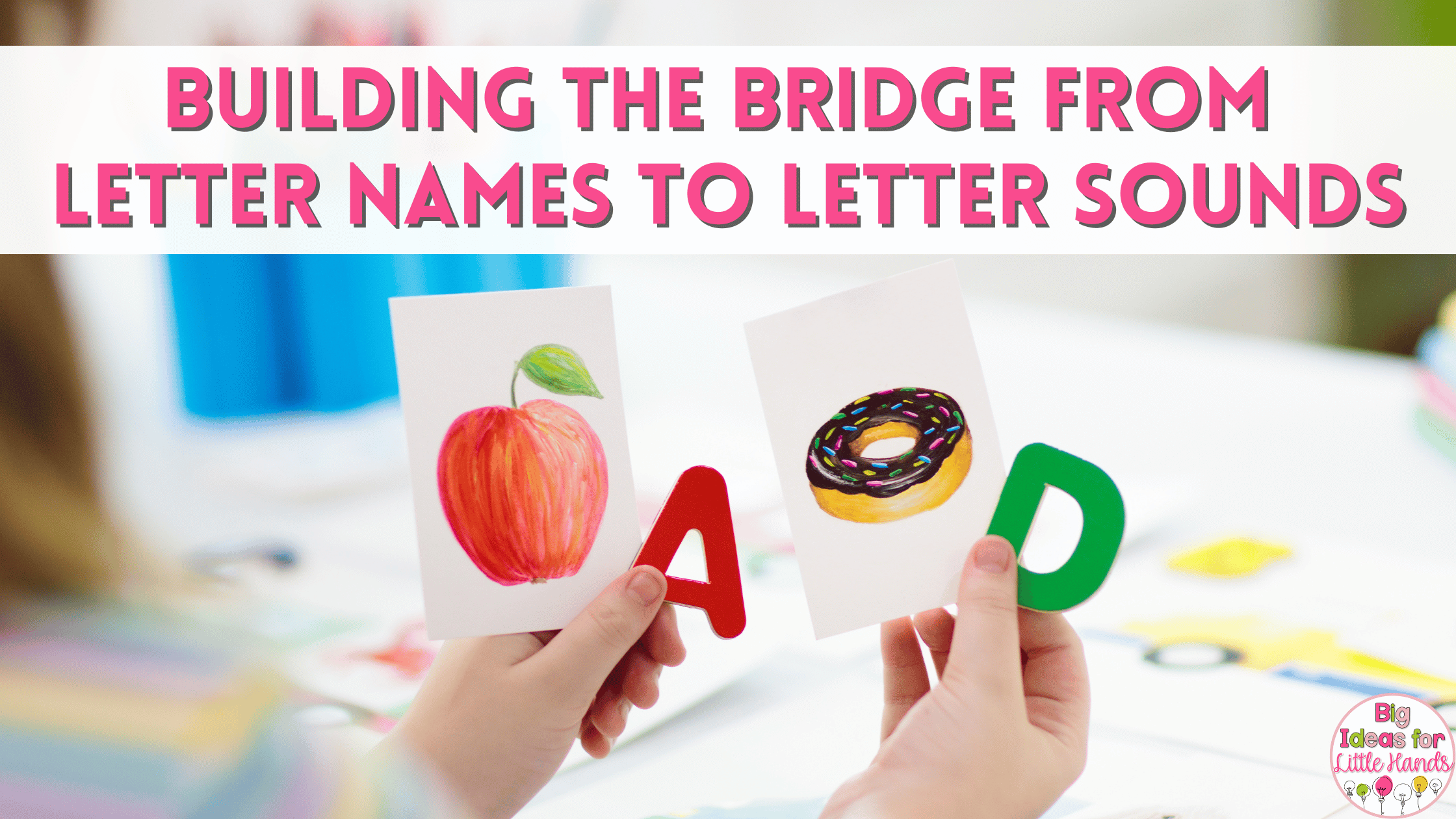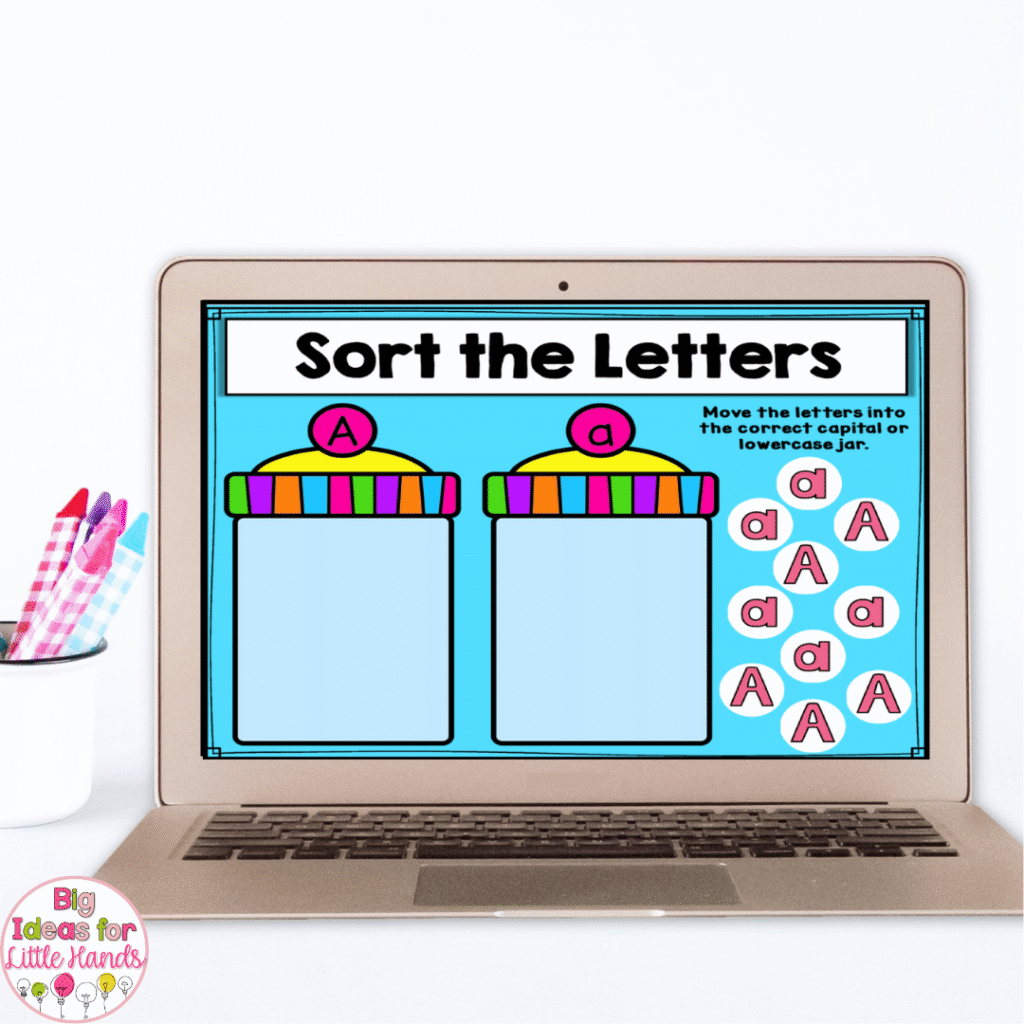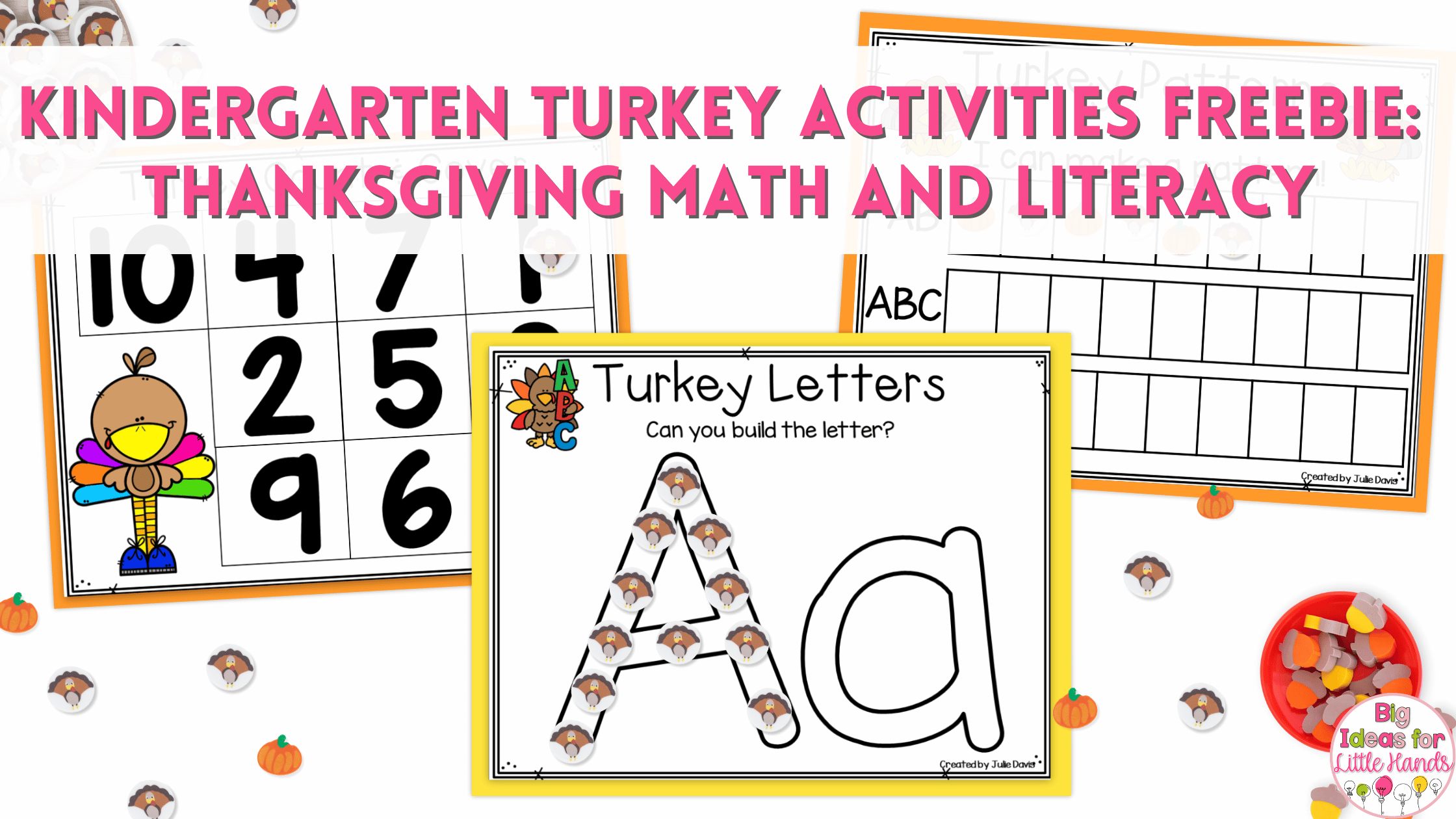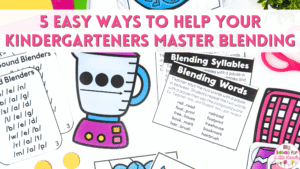If you’ve ever wondered when the right time is to dive into letter sounds with your students, you’re not alone. As primary teachers, we know that teaching the alphabet isn’t just about singing the ABCs or identifying letters on flashcards. Before we move into phonics instruction, we need to make sure our students are developmentally ready to ensure the best possible outcomes. So, how do we know when they’re ready to start learning letter sounds? Let’s talk about the signs to look for, what skills they need first, and a few engaging, low-prep activities that can help bridge the gap and get your kiddos there!

Signs They’re Ready for Letter Sounds
First things first, what are we going to look for to know when our kids are ready for letter sounds? There are a few key indicators that students are ready to move from letter names to letter sounds.
1. They recognize most uppercase letters.
A strong foundation in letter recognition, especially uppercase letters, sets the stage for connecting letter names to their letter sound. If your kids can identify most uppercase letters by name, they’re likely ready to take the next step.
2. They understand that letters represent sounds.

This is where learning the ABC song misses the point. We don’t just want our kids to know letter names; we want them to understand what they stand for! You might hear students start to say things like, “B is for ball” or “S says ssss.” This shows they’re starting to understand that letters make sounds, even if they don’t have them all straight yet.
3. Students are beginning to connect letters to sounds and isolate them.
This is an easy assessment that you can do to see where your students fall in this indicator of readiness.
Ask, “What sound do you hear at the beginning of ‘sun’?” If they can say /s/, they’re ready to move from letter names to letter sounds. This means that they can isolate the sound and connect letters to sounds.
Are your students hitting on all three of these areas? If so, it might be time to move from letter names to letter sounds! Yay! This is where the real fun begins. If your students aren’t quite there yet, don’t worry. Check out the activities in the next section to build that bridge and prepare them to move forward!
Extra Support to Master Letter Names
There’s a lot of practice that needs to happen with letter names before your kids will be ready to move onto letter sounds. And honestly, even once your kids master letter names, you’re probably going to want to continue reviewing these throughout he year. There are so many fun ways to do this, and I actually have a great post all about it! Be sure to read How to Teach Letter Identification next if your students need lots of practice with this skill. It’s jam-packed with great ideas to help make this task easier in your classroom.
I will say, though, that when teaching letter names, your best bet is to choose resources that are playful, engaging, and feel more like games than schoolwork. This makes practicing letter identification fun and easy and keeps kids engaged in your lessons! That’s really the name of the game when it comes to helping young students master letter names. My favorite alphabet activities are the small group games in this Letter Identification Pack.
Inside, you will find 16 different games and activities that allow you to target letter identification in your classroom. Some of the games included are BINGO, Feed Me, Roll and Write, and more! These games and activities are perfect for center time, small groups, or partner games. They will make preparing to move to letter sounds simple and easy, too!
Progression from Letter Names to Letter Sounds
Let’s talk about how you make a natural progression from letter names to letter sounds with your students. Keep in mind, this won’t happen overnight, and you’ll want to keep sprinkling in alphabet recognition activities to continue stacking up quick wins and reviewing in your classroom.
1. Make Letter Sounds Part of Your Day
My very best advice for moving from letter names to letter sounds, and anything that’s going to take lots of practice, is to weave it into your day. Your goal is to provide ample opportunities for students to work with letter sounds. From the moment they walk in to the moment they leave, there are SO many ways to do this! Here are just a few of my favorites to work into our day:
Morning Meeting Sound of the Day

Each day, choose a letter sound to focus on during your morning meeting. You can point to the letter, make the sound, and then provide a word to illustrate it. This works really well if you have alphabet posters hanging up in your classroom.
Then, ask the kids if they can think of any words that start with that letter. Write them down as they call them out, and draw a quick picture if you can. I also like to ask them which students in our class have that letter at the beginning of their name. This is a really easy activity to add to your day that doesn’t require any extra prep, but provides daily exposure to letter sounds.
Transition Time Letter Sound Challenge
Another easy way to weave letter sound practice into your day is during transitions. Call out instructions such as, “If your name starts with /s/, you may line up”. Or, if you are entering the classroom, have students produce a word that has the same sound as the first letter of their name before taking their seats. It’s a fun, low-stress way to squeeze in some letter sound practice!
Classroom Sound Search
Once a week or so, I like to have a classroom sound search. This is a super simple activity where the students will walk around the classroom looking for an item that starts with a certain sound. Then, we take a seat, and each kiddo gets to say the word and make the sound. You can assign kids different letter sounds, or use a focus letter each time you try this.
Letter of the Week
Do you use “letter of the week” activities in your room? Having a weekly focus letter will allow you to practice both letter names and letter sounds. We use digital activities, learning videos, songs, and group chants to practice letters weekly. Check out this post for all the details!
Hopefully, you see that with these ideas, you can help make phonemic awareness and phonics feel natural and fun without needing a full-blown lesson every time! Looking for creative ways to sneak in letter sound practice into your day is a total win in the primary classroom!
2. Use Games to Foster Onset Fluency
As I mentioned above, games are a real winner when it comes to letter identification, but they’re also a classroom champion when it comes to beginning sounds. In fact, I think all phonics skills can be improved with games. Why? They make learning active and fun! This is key for keeping engagement and excitement high in your classroom. In my room, I love to use a set of small group games for teaching beginning sounds.
Beginning sounds are the first step we take when moving from letter names to letter sounds, with the ultimate goal being onset fluency. We want our kiddos to easily be able to identify those beginning sounds and confidently shout them out. Games make it easy to do this with your whole class, in your small groups, and even facilitate practice during center time. Some of my favorite games from this resource include:
- Beginning Sounds Match It Up
- Beginning Sounds Fluency Strips
- Beginning Sounds Roll & Read
- Beginning Sounds Match & Cover
- Beginning Sounds Fluency Board Games
There are 16 different games included in this resource, so you’ll have plenty to choose from! You can learn more about how we use these games in the classroom in this post.
3. Practice, Practice, Practice Those Letter Sounds!
When you’re working with letter names or letter sounds, ample practice and review are so important. One of my favorite ways to make this a reality each and every day is with a simple, no-prep activity that I use to kick off my small groups. These Cover It Up Pages for Beginning Sounds are easy to use, versatile, and fun for kids!

These are the perfect warm-up activities to use during guided reading while you are getting the rest of the class settled into their activity. To use, I simply place one page in front of each seat at my table. At the top of the page is a focus letter. The students will determine what sound that letter makes and search their page for pictures that match.
This pack can be used as a cover-up style activity with bingo chips, mini erasers, or counters so that the sheets can be reused over and over. You may also choose to have students color the circles or use bingo daubers on their sheets. No matter what you choose, this is such an easy way to sprinkle some letter name and letter sound practice into your day!
Make Learning Letter Names and Letter Sounds Fun
The big takeaway here is that whether you’re focusing on letter names or letter sounds, fun should be the primary goal! I truly believe that when we create activities and lessons that are enjoyable and engaging for students, we help make the material stick. So, incorporate games, look for ways to sneak in practice, and mix it up. This is an exciting time in primary learning, and it means that reading is just around the corner, so have fun with it, friends!
And don’t forget, you can find all of the resources mentioned here in my TPT Shop. If you are looking for easy-to-use and effective activities, I’ve got you covered! Just click on the cover images below to find the letter identification games, the onset fluency games, and the cover it up activities for beginning sounds. With these activities, you will be well on your way to helping your students master letter identification and letter sounds.
Save These Ideas for Teaching Letter Names and Sounds
Make sure to pin this post on Pinterest so that you can come back to it when you’re ready to start working on letter names or letter sounds in your classroom!











